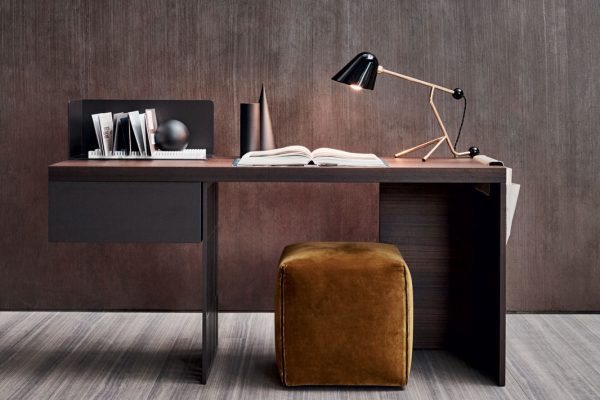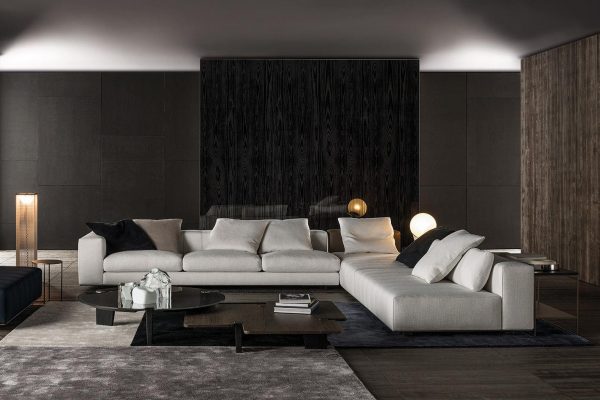Mutina, color and identity for ceramics that decorate
Tradition, innovation and vision. Three words that are part of the heritage of Mutina ceramiche, an Italian company specializing in the production of tiles and special pieces for floors and walls made of double-fired tiles. A reality that in the course of its history, which began in 1973 in Fiorano Modenese – Mutina is the Latin name for the ancient city of Modena, which turns 2,200 years old – has experienced many difficulties only to be reborn and expanded in 2005, reinventing itself each time by adopting an aesthetic thought that finds space in architecture and contemporary art.
In that year, something clicked in its visionary founder and CEO, Massimo Orsini, the need to dialogue with great designers, bringing their thinking into the world of ceramics, an area where there had never been this kind of reflection and collaboration: challenging the rules of the industry, not only in terms of scale, texture and composition, but also in terms of creativity and experimentation.
So here in the headquarter, an architecture built with a prefabricated system designed by Angelo Mangiarotti, the journey began with those architects, designers and planners who had not yet tried their hand at ceramic design, but whose sensitivity to material, texture, color or non-color and the goal of the enterprise was high.
Each of these, and we are talking about professionals of the caliber of Edward Barber and Jay Osgerby, Ronan and Erwan Bouroullec, Nathalie Du PAsquier, Konstantin Grcic, Hella Jongerius, Laboratorio Avallone, OEO Studio, Raw Edges, Inga Sempé, Patricia Urquiola, and Tokujin Yoshioka, transferred their own stylistic signature to ceramics and left their mark on it.
The challenge for all was the same: to experiment with an infinite range of textures and colors, from neutral and delicate tones to bolder and more vibrant ones, continuously enhancing the ceramics that in the meantime began to evolve and develop a strong and recognizable identity.
Sensitivity to form, a desire to innovate, and a willingness to incorporate the most heterogeneous visual stimuli from today’s world come to fruition in 2016 with Mutina For Art, an ambitious and varied program in which contemporary art is a major player. The program includes MUT, a dedicated exhibition space within the main venue; This Is Not a Prize, a major prize awarded annually; and Dialogue, a program of collaborations with artists, galleries, partners from a variety of areas of interest, and artistic and international institutions.
The continuous research that characterizes the creative and production process at Mutina, results, in 2017, in Accents: a universe of high-quality complementary products, designed by OEO Studio, that frames and enhances the spirit of Mutina’s ceramic wall tiles. The combination of technology with the artisanal flavor of “handmade” offering signature projects that are no longer mere wall tiles but refined ceramic interior design studied in detail.
Tierra e Azulej by Patricia Urquiola, a concentrate of Mediterranean tradition
Collaboration with architect and designer Patricia Urquiola gives rise to ceramic projects that retrace the Mediterranean tradition and enhance ancient materials. With Tierras, a project is proposed that develops around the concept of sedimentation and Mediterranean craft tradition. The collection is made of unglazed homogeneous body porcelain stoneware, a highly textural product characterized by a palette of intense, deep, earthy and natural colors made saturated by the black base. Azulej, on the other hand, aims to reevaluate the memory of hydraulic cement, experimenting with an innovative printing technique geared toward a widely used product. The patterns in the collection thus combine deliberately different languages: memory, geometry, pixels, developed both longitudinally and diagonally.
Pico by Ronan & Erwan Bouroullec, an industrial product synonymous with innovation and color
For the first time, with the collaboration of the Bouroullec brothers, Mutina tackles the theme of color by proposing, with the Pico collection, color variations to the basic textures through red and blue dotting interventions with regular and non-regular shapes, in positive and negative. The collection, designed for laying floor and wall coverings both indoors and outdoors, was made with continuous technology in large 12 mm thick, unglazed porcelain stoneware slabs in the most environmentally friendly way, so much so that they make it suitable for environmentally sustainable construction and represent a radical innovation in the production process.
Phenomenon by Tokujin Yoshioka, ceramics reminiscent of the textures of the natural world
The idea behind Phenomenon, the collection created by Tokujin Yoshioka for Mutina, is to make ceramics that resemble the textures of materials derived from the natural world, without manipulating their appearance, but creating a design that moves the heart and remains etched in the memory. Thus beehives, ice formations and plant cells are born, evoking natural scenery. A unique collection that combines the most advanced technologies with the manual skills necessary for “custom” handcrafted production.
Hives by Konstantin Grcic, the new 3D beehive-shaped terracotta bricks
It is shaped like a beehive Hives, the new 3D element designed by Konstantin Grcic for Mutina. It is a brick with a hexagonal structure, inspired precisely by the shape of honeycombs, the most efficient constructions found in nature and potentially expandable indefinitely, and designed for the construction of walls, architectural structures and furniture accessories. As it is particularly decorative and, due to its conformation, allows the development of novel graphic patterns.
Made of terracotta, an ancient building material whose acoustic and thermal properties, warm hue and textural texture it retains, this type of brick can be installed either from the vertical side, to give life to partitions, or horizontally. Placed in this way, aligned or staggered, they allow curved walls for the construction of architectural elements and furniture accessories such as columns, counters, and table legs.



